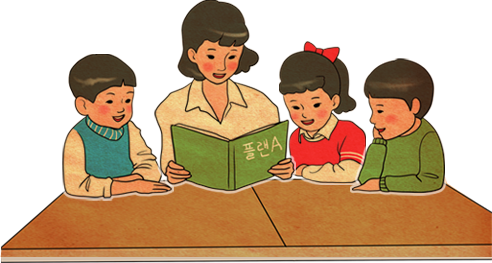Audiovisuals
Explore storytelling contents made with video and photographic materials.
Audiovisuals
The Saemaul Library That Bloomed the Reading Culture in Farming and Fishing Villages
The History of Saemaul Library
Residents Cultivated Sense of Community through Village Library
There is an African proverb, "it takes a village to raise a child”. This emphasizes the community spirit of local communities. In Korea, some people demonstrated the meaning of this proverb. They were the residents of Bongam-ri, Hyun-myeon, Yeoncheon-gun, Gyeonggi-do.

Student Cho Gye-Sook
In 1974, a fifth-grade student in the elementary school, Cho Gye-sook won the writing contest. This was the seed of the change of the village. Her father, Cho Young-soon, collected 120 books and placed them in the main room in his house for his daughter and the children in the village. It was called “Main Room Library.” Parents' attitudes changed as their children began to have an interest in reading books. Parents wanted to buy more books for their children. They formed a group called 'Shinwoohoe' and bought the book with the money they earned from collecting sand. Children collected waste to help their parents.

Main Room Library of Mr. Cho Young-soon

Opening Ceremony of Bongam-ri’s Village Library
Three years later, residents of Bongam-ri gave their children a village library with the money they earned through joint seedling planting. On the day Bongam Village Library opened, Mr. Lee Won-soo, a children’s book writer, came and celebrated the opening. It was a beautiful butterfly effect caused by the writing of a little girl. For the Bongam-ri residents, the village library has a special meaning. First, it contributed to creating a desirable educational environment for future generations. Second, it fostered community spirit in the hard-hearted village.
Village Library Owned By All Villagers

In 1974, when the “Main Room Library” opened in Bongam-ri, more than 35,000 village libraries were created nationwide. Ten ardent young people formed a library society and took charge of lending and returning. The people who were provided the opportunity to read greatly welcomed the library. However, it was not easy to maintain or develop public property. This was because the villagers had to raise funds by themselves to increase the number of books. At the beginning, the library had only 30 books.
Operating relying on a village fund rather than the funding made with tax from the government: this is the biggest difference between a library and a village library. Even when operating a small library, it was absolutely necessary for the ownership and the community consciousness to manage the public assets of the village.
Operating relying on a village fund rather than the funding made with tax from the government: this is the biggest difference between a library and a village library. Even when operating a small library, it was absolutely necessary for the ownership and the community consciousness to manage the public assets of the village.
From Village Library to Saemaul Library
The village library is the predecessor of the Saemaul Library. It was a village library project for which social worker Um Dae-sup started activities to attract village publications to farming and fishing villages by the sign "Village Library Distribution Club” in 1961. The media first showed interest in the project, the leaders of the society became executives paid by the fund, and the government actively supported it. Effective administrative management became inevitable after the village library was distributed throughout the country. In 1977, the government took over the business and changed its name to Saemaul paperback and systematized it as part of Saemaul Undong. In 1980, Um Dae-sup was awarded the Ramon Magsaysay Award, known as the Nobel Prize of Asia, in recognition of his contribution to the village library business. Meanwhile, the heart-warming story of Bongam-ri residents was produced as MBC dramas in 1983 and was broadcast as a Children's Day special drama.












